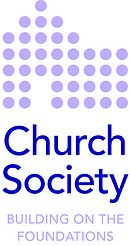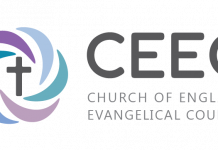Another synod, another paper on LLF. So, what do we have?
When to Discern
Within the synod paper there is much discussion about “discernment”, the idea being, no doubt, to reassure us all that no irreversible decisions are being taken. However, it is important to note that this is not discerning prior to acting but rather discerning through action. Standalone services of blessings for same sex couples will be allowed, and this will be monitored annually through “existing data or feedback gathering models”. All this for a three year period.
This is a curious thing. It is normally considered more prudent to discern whether something is right or wrong before you act. When crossing the road it is wise to check there is no traffic before you step out. True, just heading onto the road and being struck by a car would help you discern it was not safe, but would it not be better to have looked for traffic first? Especially when others on the pavement are shouting: “Stop”!
This is particularly the case when it comes to issues such as this one, where the doctrine of the Church of England is at stake. This becomes a legal matter. The bishops are keen to say that, in their opinion, standalone services using the Prayers of Love and Faith are not “contrary to, or indicative of any departure from, the doctrine of the Church of England in any essential matter” (para 36). Yet they also acknowledge, a paragraph later, that “it is ultimately not bishops who determine whether the canonical requirements as to the use of services in the discretion of the minister have been met”. In fact, “Only the Court of Ecclesiastical Causes Reserved, dealing with proceedings under the Ecclesiastical Jurisdiction Measure 1963, can resolve that question in a way that would be legally binding”. Would it not be better to settle this question before opening up the clergy to legal jeopardy? Would not the pastoral response of bishops be to protect their clergy?
So it is proposed we enter into a three year period of discernment, which will be monitored in some way. To what end? Surprisingly, there is no answer to that question because “[t]he proposal does not dictate what should happen at the end of the discernment period” (para 35). To return to our analogy of crossing the road, it seems that no-one knows why the chicken crossed the road. This act first, think later approach is deeply destructive of the church and its clergy. Especially in matters of doctrine.
The Nature of Doctrine
But, the proposal wonders, what is doctrine? In paragraph 41, the question is asked “How do we, as a church, develop or change our doctrine?”. In order to answer that question, it is proposed that the Faith and Order Commission carry out a study to “provide clarity around how doctrine can develop or change within the Church of England” (para 41). Why? So that, the proposal continues “as a result of this, the House of Bishops will be able to make decisions on the question of the removal of restrictions on clergy entering same-sex civil marriage”.
Now, it is true that over time our understanding of doctrine deepens and becomes more focussed, but we should be wary of the idea that any change can be dressed up simply as a deeper understanding. After all “God is not man, that he should lie, or a son of man, that he should change his mind” (Numbers 23:19). It may be convenient for modern Westerners to believe they know more of God than the apostles, but that is to be guilty of mere relativism. To practice what C S Lewis called “chronological snobbery”, which he identified as “the uncritical acceptance of the intellectual climate common to our own age and the assumption that whatever has gone out of date is on that account discredited”. No, he continued, “You must find why it went out of date. Was it ever refuted (and if so by whom, where, and how conclusively) or did it merely die away as fashions do?”.
In other words we need to ask ourselves: are proposed changes progressing towards God? Or taking us further away from him?
In passing, we might also wonder quite why it is that the Church of England (or at least the House of Bishops) have taken it upon themselves to be the arbiters of doctrine. Are we not “part of the One, Holy, Catholic and Apostolic Church” (Canon c15)? We should remember that it is the job of the church to describe doctrine, and not to define it.
A pertinent question is, of course, who is competent to decide upon matters of doctrine? Paragraph 41 reads:
“One of the challenges of this stage of the LLF work has been to identify exactly what category of questions we have been trying to discern answers to: primarily, LLF seemed to be a question of sexual ethics. Then it was discussed as an ecclesiological question, as we looked together at what it means to be one church. More recently it has touched on questions of liturgy and practice. Now it is clear that the doctrinal elements also need to be explored”.
This is startling. It would seem that the doctrinal core of the debates around LLF were simply missed at first, yet these are issues of Christian Anthropology and ask us what it is to be human. And, we should remember, we hold that humans are made in the image of God and so matters of Anthropology are deeply profound and affect the way in which we understand the very nature of God. That this was missed is extraordinary.
“Unity, unity,” where there is no unity
The Bishops’ Statement (para 51) acknowledges that LLF “is a matter on which there is deeply held disagreement”, and yet we are to put this to one side in the interests of “unity”. In the introduction we are told that these different views are “held with integrity” (p3), as if sincerity trumps all.
This raises questions: “Is it possible to hold multiple doctrines simultaneously, in order to respond in the most gracious and pastoral way possible, even when this is messy or incoherent? Is it possible for there to be a range of interpretations of one doctrine?” (para 41). Are we, like Lewis Carroll’s queen, to believe “as many as six impossible things before breakfast”? After all, it is a fundamental law of logic that “opposite statements are not both true at the same time” (Aristotle, Metaphysics IV).
This is no unity, but rather the institutionalising of ongoing arguments. We are to be united around the Pension Fund, and little more. The introduction wonders if this is “a legitimate extension of our Anglican ecclesiology”. Surely not! Jeremiah springs to mind: “They have healed the wound of my people lightly, saying, ‘Peace, peace,’ when there is no peace” (Jeremiah 6:14). Our unity should be in Christ, not some formulation of ecclesiology. Jeremiah continues, “Thus says the LORD: ‘Stand by the roads, and look, and ask for the ancient paths, where the good way is; and walk in it, and find rest for your souls’”.
Pick a Bishop
As a consequence of this disunity, it is proposed that people might be able to choose a bishop whose “ministry they are in conscience able to receive” (p1). It would appear that regional pools of bishops are in mind, from which a choice might be made. So much for the notion that bishops are centres of unity within their dioceses. Now it is acknowledged that LLF has rendered that (rather hopeful) principle redundant.
What of multi-parish benefices, where different parishes may tend towards different bishops? What if PCC and minister look in different directions? What of the patrons of parishes? These questions lie unanswered, but in a church where multi-parish benefices are now the norm this seems a recipe for more ongoing disunity. Woe is the split benefice who is seeking a new incumbent!
Squandering the Confidence of the Church
In all of this process, confidence has been lost in the House of Bishops. At the outset of all this, General Synod voted that any changes “should not be contrary to or indicative of a departure from the doctrine of the Church of England”, yet to this has been added the words “in any essential matter”. This was not what Synod asked for.
Standalone services are being suggested (seemingly under Canon B5), but at the last synod it was acknowledged that this would result in the “[h]igh likelihood of legal challenge being brought against individual ministers” (GS 2346).
These proposals are only brought in an “outline form” (p1), where the detail matters and repeated calls for the release of the legal advice have fallen on deaf ears. We are asked to trust in Codes of Practice (yet to be formulated) and a Bishops’ Statement, but the experience of those living under the Five Guiding Principles is that these exist as words only. The process of choosing bishops “may or may not include transferred oversight” (para 47), but we are not to know yet.
There seems to be a “trust me bro” approach to leadership, yet that trust has eroded. In fact, the trust seems to have been lost in both directions since the proposals stipulate that a final decision is to be taken after the next set of General Synod elections. It seems the bishops do not trust the current synod to act as they would like.
And so we limp on as a church, shackled to the LLF process. Diocesan synods will engage with this process, so this division will be passed down more locally. All of this at a time when, another synod paper tells us, church attendance figures are down 29% since 2015, parish incomes are down 14% since the pandemic and vocations have fallen by 40% (GS Misc 1384). So much for unity at all costs.










